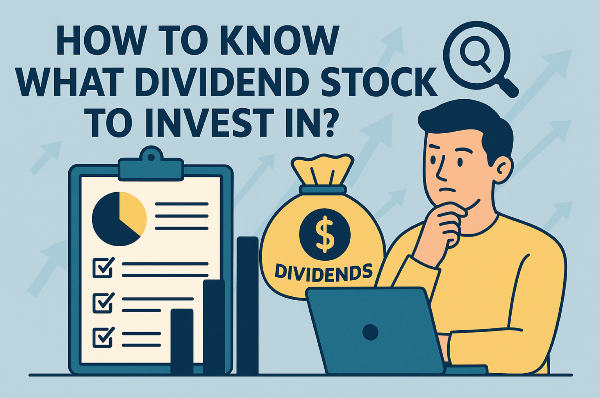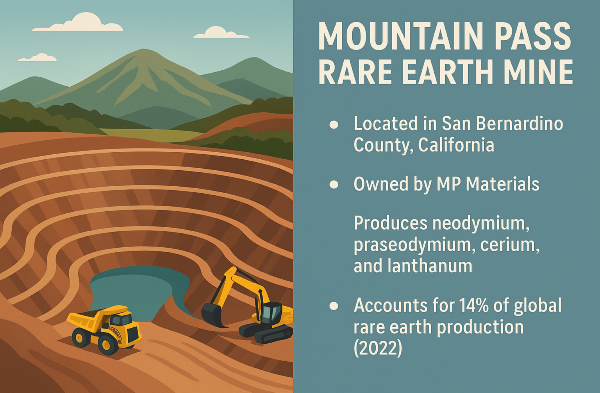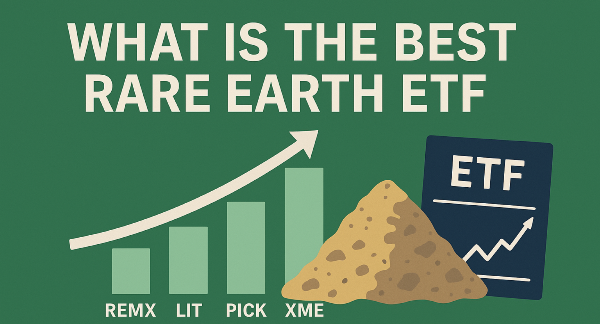Introduction
Dividend investing might not sound exciting at first, but it’s actually one of the most effective ways to build long-term wealth and passive income. The idea is simple: invest in companies that regularly pay dividends, and over time, you’ll collect a steady stream of returns while benefiting from potential stock price appreciation. But not all dividend stocks are reliable, and choosing the right ones is essential for sustainable growth. A well-chosen portfolio should focus on factors like dividend yield, payout ratio, financial stability, and industry trends. Whether you’re a seasoned investor or just starting out, making informed decisions about dividend stocks can help set you up for financial success.
Understanding Dividend Stocks
Dividend stocks offer investors a share of a company’s profits, providing consistent income beyond just stock appreciation. But not all dividend stocks are created equal. Blue-chip dividend stocks—established companies with reliable payout histories—are considered the most stable option. High-yield dividend stocks might offer larger returns, but they can also be risky if the company struggles to sustain those payouts. Then there are growth dividend stocks, which gradually increase dividend payments over time, making them attractive for long-term investors looking to maximize compounding gains. Knowing the differences and analyzing metrics like dividend yield and payout ratio can help investors make smarter choices when building a strong dividend portfolio.
Key Factors to Consider When Investing in Dividend Stocks
Dividend Yield vs. Dividend Growth
A common debate among dividend investors is whether to prioritize high yield or dividend growth. While high-yield dividend stocks offer quick returns, they can also indicate financial instability or a company desperately trying to attract investors. On the other hand, dividend growth stocks steadily increase their payouts over time, making them more reliable for long-term investment. Rather than chasing high yields, investors should focus on stocks that have a history of sustainable dividend increases, backed by strong company fundamentals.
Dividend Payout Ratio
The dividend payout ratio is another crucial factor to examine. It indicates what percentage of a company’s earnings are distributed as dividends. A low payout ratio suggests that the company retains enough earnings for reinvestment and future growth, making its dividend more sustainable. However, an excessively high payout ratio could mean the company is overstretching its resources, increasing the likelihood of dividend cuts if earnings decline. Investors should aim for companies with a balanced payout ratio to ensure financial stability and long-term dividend reliability.
Company’s Financial Health & Stability
Before investing in dividend stocks, it’s essential to assess a company’s overall financial health. Strong balance sheets, steady earnings, and reasonable debt levels all contribute to dividend stability. Companies that consistently generate profit are more likely to maintain or grow their dividend payments over time, making them reliable long-term investments. Investors should analyze key financial metrics like profitability ratios, debt-to-equity levels, and historical dividend performance before making investment decisions.
Industry & Economic Conditions
Beyond individual company fundamentals, industry and economic trends also play a role in dividend stock performance. Economic downturns can significantly impact dividend payouts, especially for companies in cyclical industries such as consumer discretionary or technology. Meanwhile, defensive stocks, like those in healthcare, utilities, or consumer staples, tend to maintain dividends even during recessions. Investors can build a more stable portfolio by balancing both defensive and cyclical stocks, ensuring resilience in various market conditions.
Researching & Analyzing Dividend Stocks
Successful dividend investing requires thorough research and analysis. Dividend Aristocrats and Dividend Kings—companies with long histories of consistently increasing dividend payouts—are strong options to consider. However, investors should also use stock research tools, such as stock screeners and financial reports, to evaluate a company’s stability and dividend sustainability. Reviewing key financial statements, including income reports and balance sheets, can provide deeper insights into a company’s fiscal health.
Diversifying Your Dividend Portfolio
No investor should rely too heavily on a single type of stock or sector. Portfolio diversification helps mitigate risks by spreading investments across various industries and businesses. A well-balanced dividend portfolio combines growth stocks and dividend stocks, allowing investors to enjoy both steady income and long-term capital appreciation. Diversification ensures that if one sector experiences volatility, other investments can help offset losses and maintain portfolio stability.
Common Mistakes to Avoid
One of the biggest mistakes investors make is chasing high-yield stocks without evaluating their financial stability. While high yields may seem attractive, they can sometimes indicate a company facing financial trouble or an unsustainable payout. Another common error is failing to diversify, which exposes an investor’s portfolio to unnecessary risk. Relying too heavily on a single sector or ignoring valuation metrics like price-to-earnings ratios can lead to poor investment decisions. By taking a strategic approach and avoiding these pitfalls, investors can build a strong dividend portfolio that generates consistent and reliable income.
Conclusion
Successful dividend investing requires more than just selecting stocks with high payouts—it’s about finding companies with sustainable dividends, financial stability, and industry resilience. By focusing on factors like dividend yield, payout ratios, company fundamentals, and diversification, investors can build a portfolio that provides long-term passive income and financial security. Whether you're looking for steady returns or aiming to maximize compounding growth, applying these strategies will help you make informed investment decisions and work toward financial independence.
Diversification plays a crucial role in strengthening a dividend investment strategy, helping investors balance growth stocks and dividend stocks for both steady income and long-term appreciation. By leveraging stock research tools, analyzing dividend payout ratios, and understanding economic conditions, investors can build a resilient dividend portfolio tailored to their financial goals. Whether you're a seasoned investor or just starting, applying these strategies will empower you to make informed decisions, maximize returns, and achieve financial stability through dividend investing.
🚀 Master Dividend Investing – Your Ultimate Guide 💰
Looking to supercharge your portfolio with dividend stocks? 📈 Check out these essential reads:
🏆 Top Dividend Stocks & Strategies
💰 Passive Income & Dividend Power Moves
🔍 How to Pick Winning Dividend Stocks
📊 Dividend Ratios & Metrics
⚡ Dividend Timing & Tax Strategies
🔗 Bookmark this guide & start your dividend wealth journey today! 🚀💸




























Introduction
Dividend investing might not sound exciting at first, but it’s actually one of the most effective ways to build long-term wealth and passive income. The idea is simple: invest in companies that regularly pay dividends, and over time, you’ll collect a steady stream of returns while benefiting from potential stock price appreciation. But not all dividend stocks are reliable, and choosing the right ones is essential for sustainable growth. A well-chosen portfolio should focus on factors like dividend yield, payout ratio, financial stability, and industry trends. Whether you’re a seasoned investor or just starting out, making informed decisions about dividend stocks can help set you up for financial success.
Understanding Dividend Stocks
Dividend stocks offer investors a share of a company’s profits, providing consistent income beyond just stock appreciation. But not all dividend stocks are created equal. Blue-chip dividend stocks—established companies with reliable payout histories—are considered the most stable option. High-yield dividend stocks might offer larger returns, but they can also be risky if the company struggles to sustain those payouts. Then there are growth dividend stocks, which gradually increase dividend payments over time, making them attractive for long-term investors looking to maximize compounding gains. Knowing the differences and analyzing metrics like dividend yield and payout ratio can help investors make smarter choices when building a strong dividend portfolio.
Key Factors to Consider When Investing in Dividend Stocks
Dividend Yield vs. Dividend Growth
A common debate among dividend investors is whether to prioritize high yield or dividend growth. While high-yield dividend stocks offer quick returns, they can also indicate financial instability or a company desperately trying to attract investors. On the other hand, dividend growth stocks steadily increase their payouts over time, making them more reliable for long-term investment. Rather than chasing high yields, investors should focus on stocks that have a history of sustainable dividend increases, backed by strong company fundamentals.
Dividend Payout Ratio
The dividend payout ratio is another crucial factor to examine. It indicates what percentage of a company’s earnings are distributed as dividends. A low payout ratio suggests that the company retains enough earnings for reinvestment and future growth, making its dividend more sustainable. However, an excessively high payout ratio could mean the company is overstretching its resources, increasing the likelihood of dividend cuts if earnings decline. Investors should aim for companies with a balanced payout ratio to ensure financial stability and long-term dividend reliability.
Company’s Financial Health & Stability
Before investing in dividend stocks, it’s essential to assess a company’s overall financial health. Strong balance sheets, steady earnings, and reasonable debt levels all contribute to dividend stability. Companies that consistently generate profit are more likely to maintain or grow their dividend payments over time, making them reliable long-term investments. Investors should analyze key financial metrics like profitability ratios, debt-to-equity levels, and historical dividend performance before making investment decisions.
Industry & Economic Conditions
Beyond individual company fundamentals, industry and economic trends also play a role in dividend stock performance. Economic downturns can significantly impact dividend payouts, especially for companies in cyclical industries such as consumer discretionary or technology. Meanwhile, defensive stocks, like those in healthcare, utilities, or consumer staples, tend to maintain dividends even during recessions. Investors can build a more stable portfolio by balancing both defensive and cyclical stocks, ensuring resilience in various market conditions.
Researching & Analyzing Dividend Stocks
Successful dividend investing requires thorough research and analysis. Dividend Aristocrats and Dividend Kings—companies with long histories of consistently increasing dividend payouts—are strong options to consider. However, investors should also use stock research tools, such as stock screeners and financial reports, to evaluate a company’s stability and dividend sustainability. Reviewing key financial statements, including income reports and balance sheets, can provide deeper insights into a company’s fiscal health.
Diversifying Your Dividend Portfolio
No investor should rely too heavily on a single type of stock or sector. Portfolio diversification helps mitigate risks by spreading investments across various industries and businesses. A well-balanced dividend portfolio combines growth stocks and dividend stocks, allowing investors to enjoy both steady income and long-term capital appreciation. Diversification ensures that if one sector experiences volatility, other investments can help offset losses and maintain portfolio stability.
Common Mistakes to Avoid
One of the biggest mistakes investors make is chasing high-yield stocks without evaluating their financial stability. While high yields may seem attractive, they can sometimes indicate a company facing financial trouble or an unsustainable payout. Another common error is failing to diversify, which exposes an investor’s portfolio to unnecessary risk. Relying too heavily on a single sector or ignoring valuation metrics like price-to-earnings ratios can lead to poor investment decisions. By taking a strategic approach and avoiding these pitfalls, investors can build a strong dividend portfolio that generates consistent and reliable income.
Conclusion
Successful dividend investing requires more than just selecting stocks with high payouts—it’s about finding companies with sustainable dividends, financial stability, and industry resilience. By focusing on factors like dividend yield, payout ratios, company fundamentals, and diversification, investors can build a portfolio that provides long-term passive income and financial security. Whether you're looking for steady returns or aiming to maximize compounding growth, applying these strategies will help you make informed investment decisions and work toward financial independence.
Diversification plays a crucial role in strengthening a dividend investment strategy, helping investors balance growth stocks and dividend stocks for both steady income and long-term appreciation. By leveraging stock research tools, analyzing dividend payout ratios, and understanding economic conditions, investors can build a resilient dividend portfolio tailored to their financial goals. Whether you're a seasoned investor or just starting, applying these strategies will empower you to make informed decisions, maximize returns, and achieve financial stability through dividend investing.
🚀 Master Dividend Investing – Your Ultimate Guide 💰
Looking to supercharge your portfolio with dividend stocks? 📈 Check out these essential reads:
🏆 Top Dividend Stocks & Strategies
💰 Passive Income & Dividend Power Moves
🔍 How to Pick Winning Dividend Stocks
📊 Dividend Ratios & Metrics
⚡ Dividend Timing & Tax Strategies
🔗 Bookmark this guide & start your dividend wealth journey today! 🚀💸